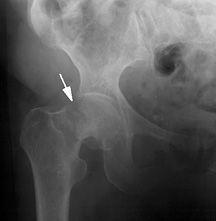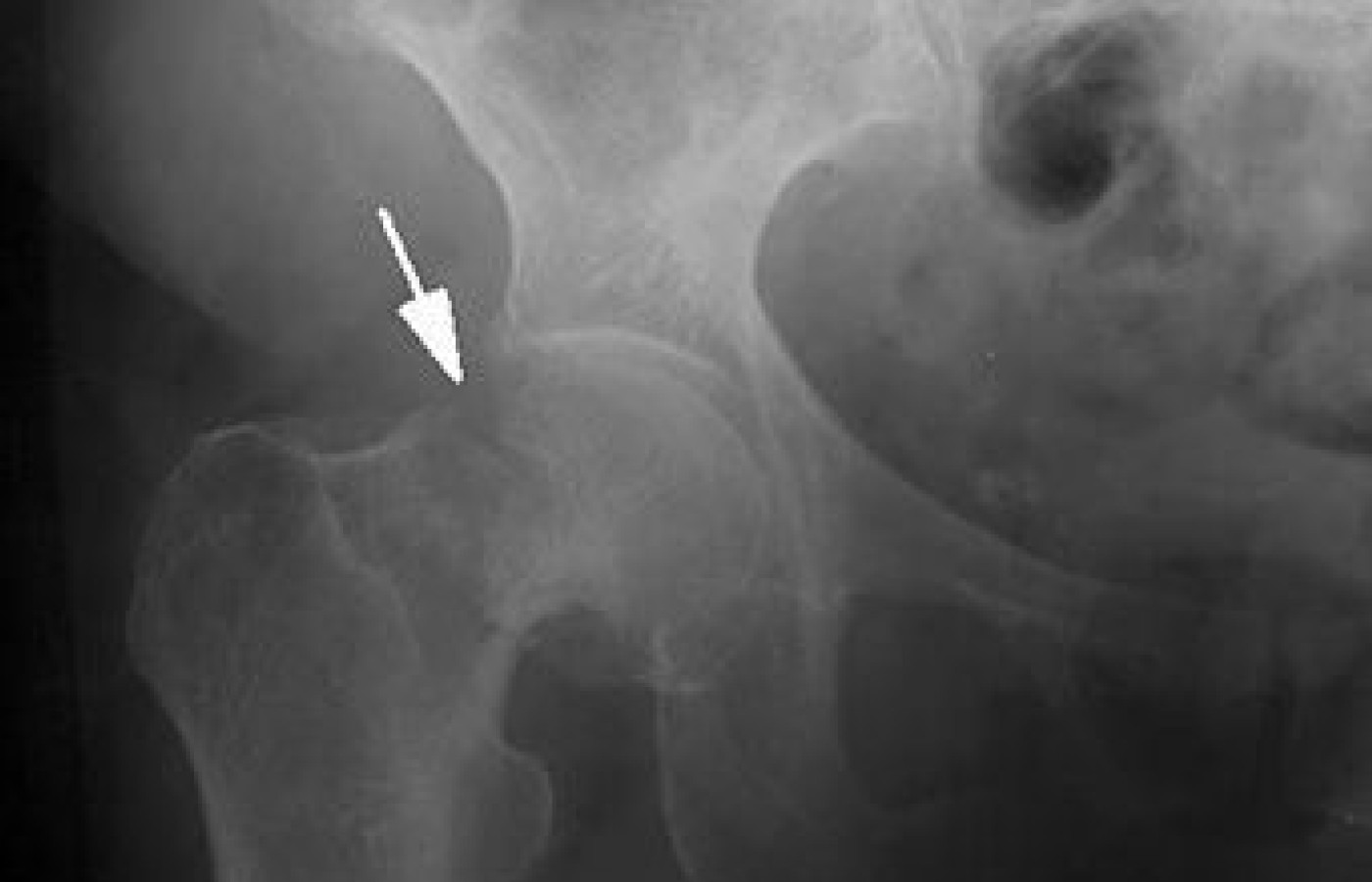You became a chiropractor to serve people, not an insurance company. You deserve to run a business that aligns with your values, supports your family and lights you up. Cash-based care isn’t just a pricing model – it’s a philosophy rooted in freedom, trust and respect for your patients and for yourself. Here's why - and how - to do it.
Increased Fracture Risk With Proton-Pump Inhibitor Use
The radiographic diagnosis is a hip fracture. Many clinicians would assume that this fracture is due to postmenopausal osteoporosis because the patient is 48 years old and female. In this case, the patient is not presently menopausal, but she has been taking Prilosec for five years for "indigestion."
The history of this patient is that she was given Prilosec along with antibiotics for peptic ulcers. She apparently recovered, but continued to take the Prilosec as a preventative medication. It appears as if this misunderstanding may have led her to develop osteoporosis, leading to the hip fracture from a minor fall.
We must add proton-pump inhibitors (PPIs) to our growing list of medications that are associated with osteoporotic fractures. Following a recent Food and Drug Administration review of studies, the FDA issued a warning in May regarding possible increased risk of hip, wrist and spine fractures associated with high doses or long-term (one year or more) use of PPIs.1
It's thought that when these drugs reduce acid secretion by the stomach, it results in decreased calcium absorption. Calcium malabsorption is being recognized as a significant side effect in patients who have taken PPIs for an extended period of time. An acidic environment in the gastrointestinal tract facilitates the release of ionized calcium from insoluble calcium salts. Vitamin B12 absorption has also been shown to be decreased in the presence of chronic PPI use.

Since the advent of potent acid-suppressive medications such as PPIs, millions of people have been using these medications on a continuous or long-term basis. This class of medications, which includes such drugs as Prilosec, Prevacid and Protonix, are used to treat certain digestive tract problems including peptic ulcer disease and gastroesophageal reflux. They act to reduce the amount of acid formed by the stomach lining, helping to heal the ulcer and reduce the amount of acid available to reflux into the esophagus. They also help to heal erosions of the esophagus caused by chronic reflux symptoms. They are definitely useful drugs, but are not without side effects.
Osteoporotic fractures are common among the elderly population, and they entail considerable morbidity and mortality. The use of PPIs is widespread and may have an exaggerated effect among those at risk for osteoporosis. It also appears that many patients are inappropriately being treated with PPIs. One study reported that 30 percent of patients receiving a PPI in one academic geriatric practice had no documented indication for PPI use.2
"A staggering 113.4 million prescriptions for proton pump inhibitors are filled each year, making this class of drugs, at $13.9 billion in sales, the third highest seller in the United States," stated Mitchell H. Katz, MD, of the San Francisco Department of Public Health, in an editorial in the Archives of Internal Medicine earlier this year.3 According to Dr. Katz, while PPI are helpful in treating selected medical conditions, the huge numbers prescribed indicate that many (up to 70 percent) are prescribed inappropriately.
People need to be aware of the prevalence of PPI overuse. Patients who have been taking PPIs for over a year should at the very least be re-evaluated. If PPIs are still appropriate, then they should be supplemented with calcium and possibly vitamin B12.
How often does a patient report to the chiropractor that they are taking medication for indigestion? We must be aware of all the medications patients are taking; this includes prescriptions and over-the-counter medications. There also seems to an assumption that since a drug is prescribed or available over the counter, it must be safe. How many people read the three- to four-page insert of fine print that comes in the box? It's up to you to help educate patients on the potential side effects so they are adequately informed.
So, in addition to corticosteroids, which are well-known to elevate osteoporosis risk, we should include proton-pump inhibitors. Research suggests other medications may also be associated with increased fracture risk under certain circumstances, including bisphosphonates, aromatase inhibitors for the treatment of breast cancer, and selective serotonin reuptake inhibitors (a class of antidepressants).4-6 I'm sure I've missed some, but these are the most common. If you are not certain of the side effects of a medication your patient is taking, the safest and most responsible action is to look them up. I'm sure you - and your patients - will be surprised.
References
- Proton Pump Inhibitors (PPI): Class Labeling Change. Food and Drug Administration, May 25, 2010.
- George CJ, Korc B, Ross JS. Appropriate proton pump inhibitor use among older adults: a retrospective chart review. Am J Geriatr Pharmacother, December 2008;6(5):249-54.
- Katz MH. "Failing the Acid Test: Benefits of Proton Pump Inhibitors May Not Justify the Risks for Many Users" (Editorial). Arch Intern Med, May 2010;170(9):747-8.
- Pate D. "Long-Term Bisphosphonate Use and Increased Fracture Risk." Dynamic Chiropractic, June 17, 2010.
- Naganathan V, Jones G, Nash P, et al. Vertebral fracture risk with long-term corticosteroid therapy. Prevalence and relation to age, bone density, and corticosteroid use. Archives of Internal Medicine, Oct. 23, 2000;160:2917-22.
- Ginzburg R. Risk of fractures with selective serotonin-reuptake inhibitors or tricyclic antidepressants. Annals of Pharmacotherapy, published online Dec. 30, 2008.



